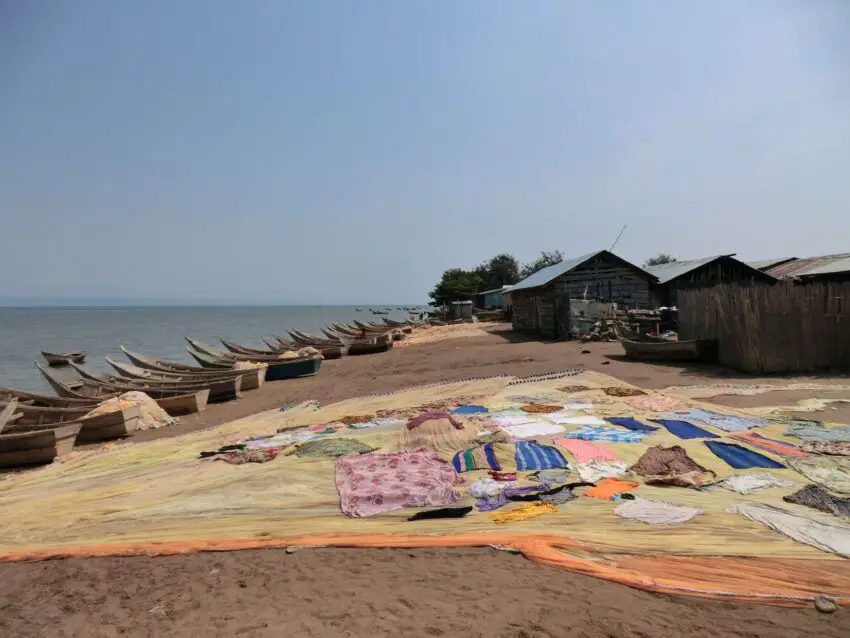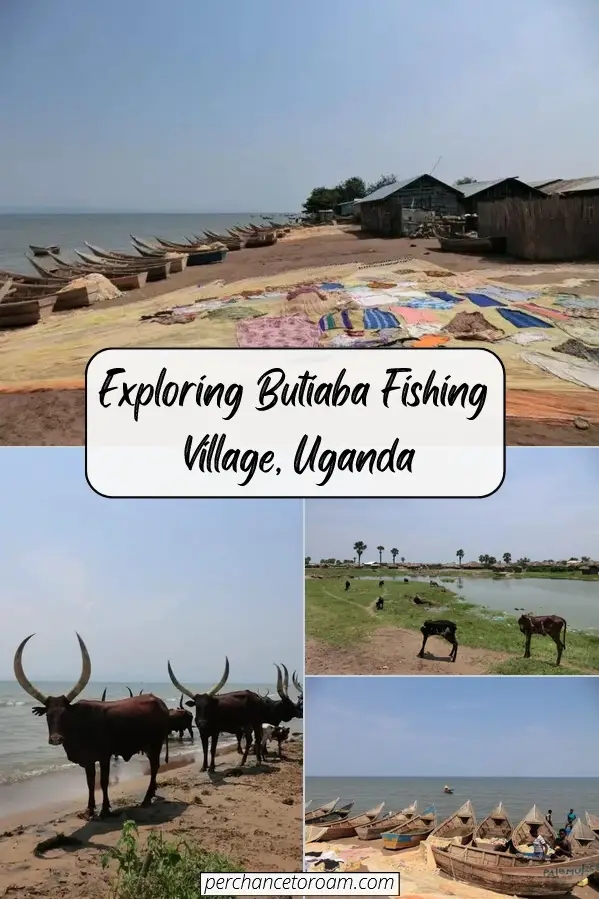If you’re looking to get a taste of Ugandan small-village life, I highly recommend a visit to delightful Butiaba Village on the shores of Lake Albert. We took a day trip here from nearby Masindi and were immediately enamoured with the Butiaba’s bucolic surroundings and very welcoming locals.
Despite its sleepy back-water exterior, there’s also a bit of history here and even Ernest Hemingway once dropped by Butiaba (well, dropped out of the sky to be more precise, as his plane crashed during takeoff). Here’s everything you need to know about Butiaba’s low-key sights.
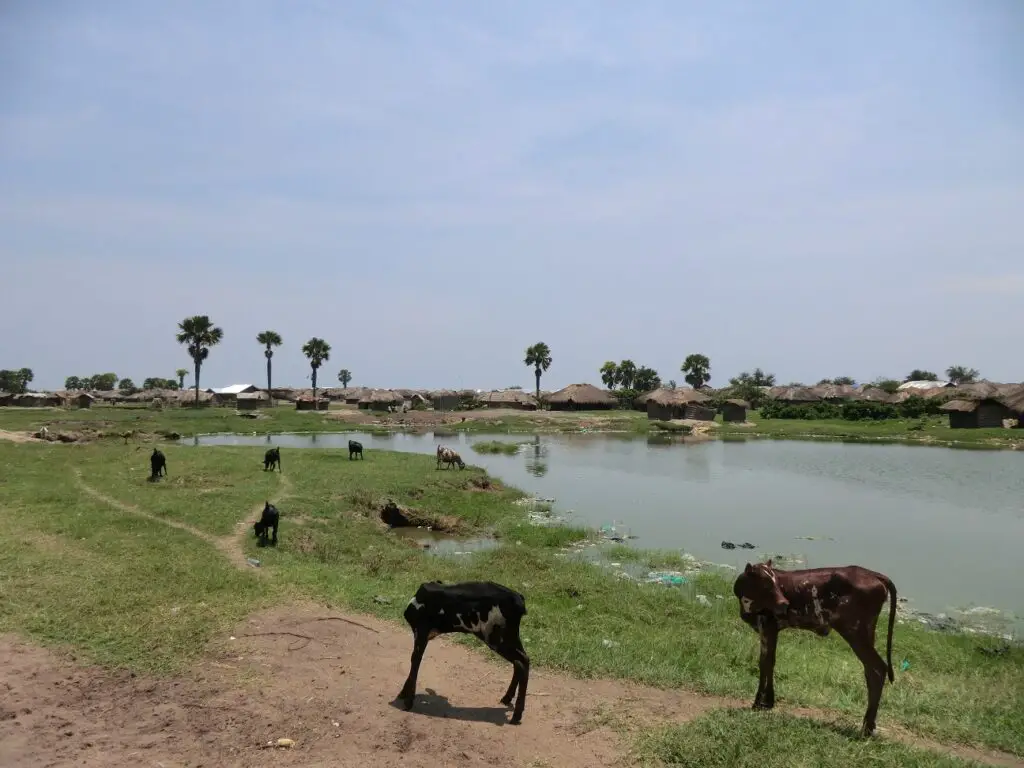
This post may contain affiliate links, and I might earn a small commission at no additional cost to you. For more info, click here.
What to See in Butiaba
The attractive location along the eastern shore of the huge Lake Albert is arguably Butiaba’s main drawing point. Many of the locals are fishermen and if you come early enough, you might be able to watch the catch of the day being hauled in.
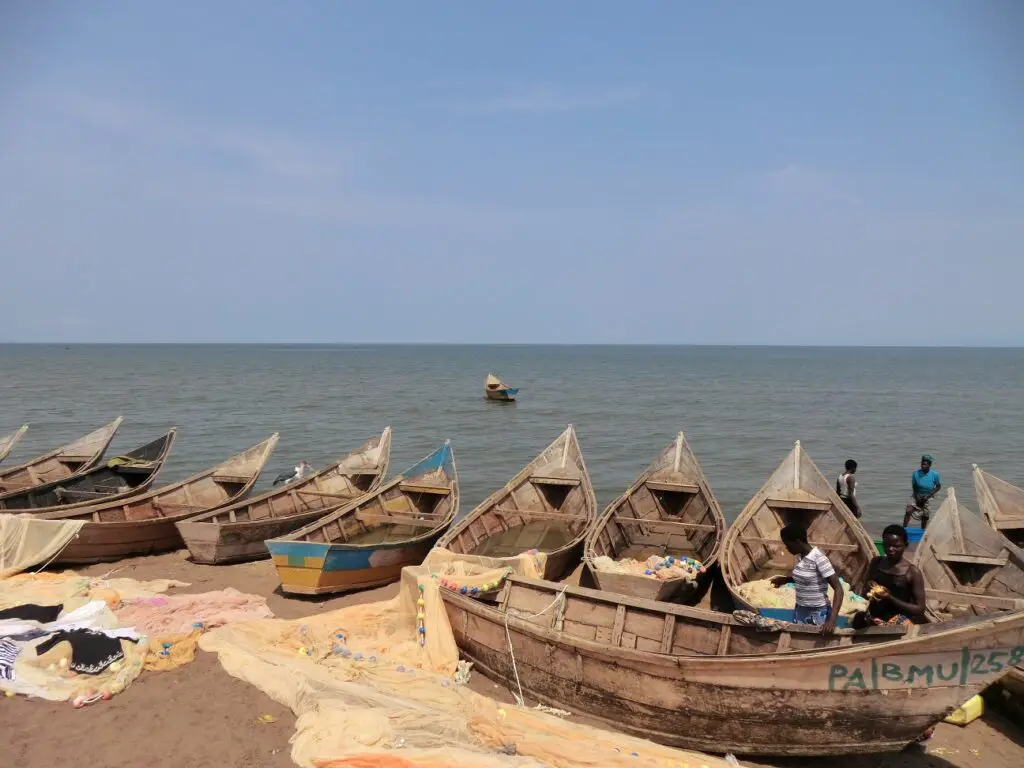
We arrived in the late morning, and the huge nets were already spread out on the sand to dry in the sun, although we spotted a few solitary fishing boats on the lake. If you walk north along the shore, you’ll eventually reach a small peninsula, and if you look north-west from here, you’ll spot the mountains of the DR Congo across the lake.
On the eastern side of the small isthmus, the wreck of the British passenger ferry SS Robert Coryndon used to lie for decades after running aground in 1962, but unfortunately the picturesquely decaying hull has been stripped for scrap metal over the last few years, and we only spotted a couple of metal posts sticking out of the water.
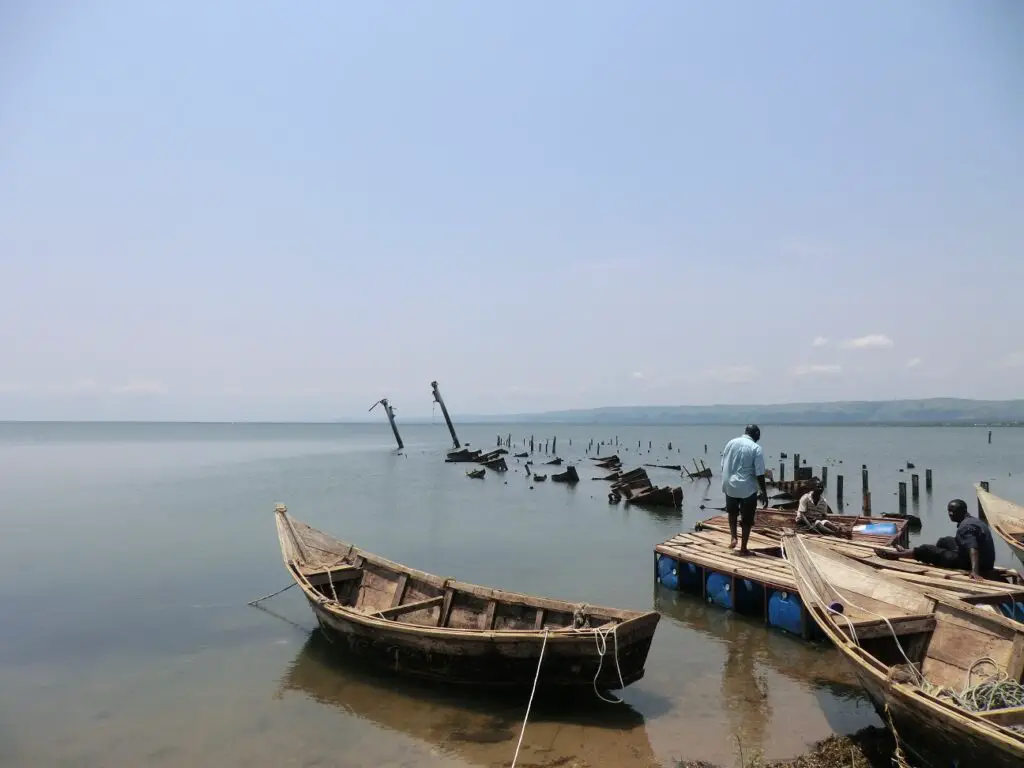
Another reason to spend some time by the lakeshore is the possibility to spot various species of waterbirds, including lots of cormorants, plovers and the occasional pelican. As per usual in the country, you’ll also meet the ubiquitous marabou storks, plus you shouldn’t be surprised to suddenly be surrounded by a herd of free-roaming Ankole cattle while exploring the area.

The small pastures surrounding the village are actually super bucolic, dotted with palm trees and patches of blooming flowers, as they are. The village itself is a rather small collection of mostly reed-decked mud houses, with only a handful of roads running through them.
We had some very friendly interactions with the welcoming locals and like most places in rural Uganda, mzungus are a huge hit with the local children. Honestly, we felt like the pied piper of Hamelin walking around Butiaba’s alleyways with an ever-growing trail of kids in tow.
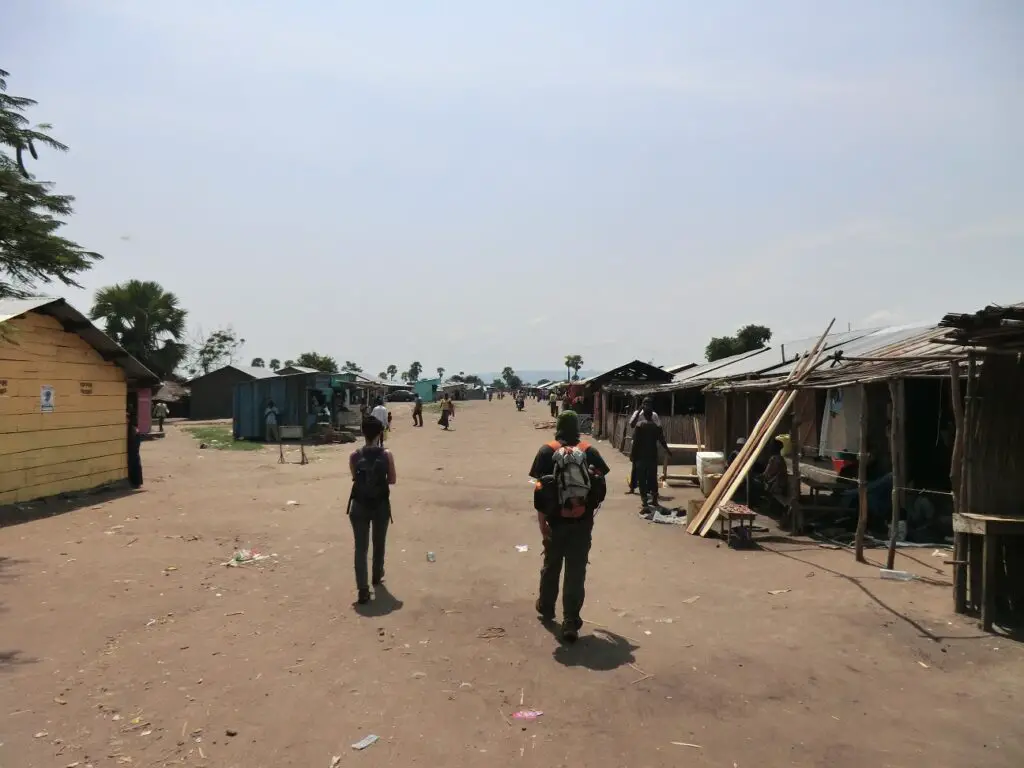
While there are no must-see sights in the village, we certainly enjoyed dropping off Uganda’s modest tourist trail for a leisurely half-day of exploring Butiaba and its surroundings.
How to Get to Butiaba
The best base for exploring the village is the town of Masindi, from where matatus bound for Butiaba leave from the taxi park. As always, these leave when full, so you have to be prepared to wait. If you’re in a hurry, you can also hire a taxi or boda-boda to take you.
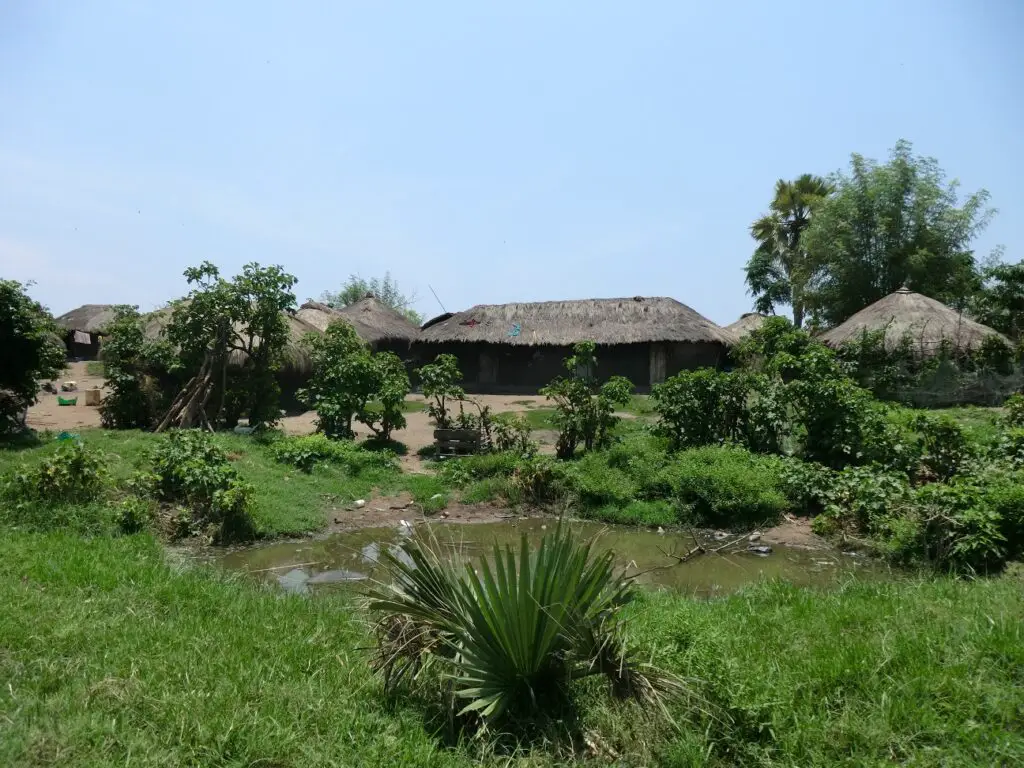
Likewise, going back to Masindi, you’ll need some patience or try to hitch a ride. We actually managed to get a lift from some military officers to Biso village, where matatu connections to Masindi are a little more frequent. If you have to wait, there’s a small café with a pretty, tree-shaded courtyard near the spot the minibuses leave from.
The entire journey between Masindi and Butiaba by matatu should take between 1,5 and 2 hours, depending on the frequency of stops and the recklessness of the driver.
Accommodation in Butiaba
As nice as a night in Butiaba sounds, there are no official guest houses in the village, so unless you arrange a private homestay with one of the local families, Masindi is the closest place with some accommodations.
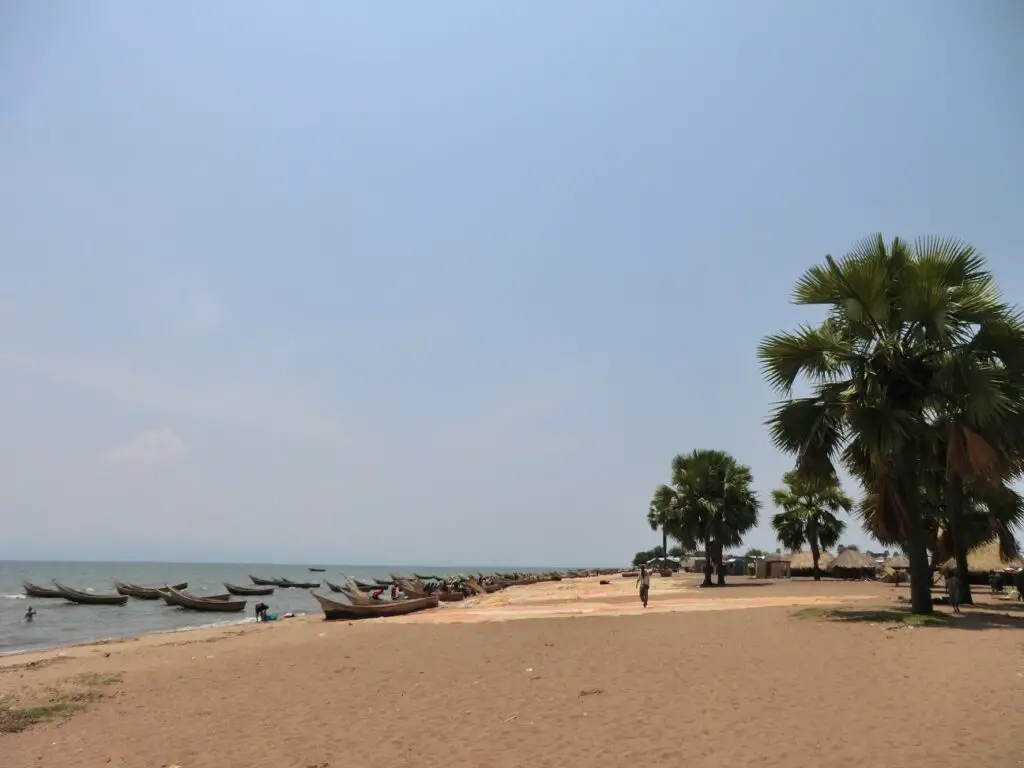
We stayed in the very cheap, but also slightly scruffy, Buma Hotel. Murchison Backpackers seems to be a better budget choice, while Kabalega Resort would be a well-rated mid-range choice.
Where to Go Next
Murchison Falls National Park, Uganda’s Best Safari Destination
